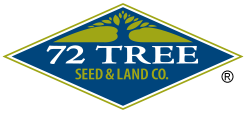Notice: Undefined variable: page in /home/vrxdg1855sn3/public_html/wp-content/themes/72tree/content.php on line 15
Notice: Trying to get property 'ID' of non-object in /home/vrxdg1855sn3/public_html/wp-content/themes/72tree/content.php on line 15
Oak Wilt Identification, Treatment, and Prevention
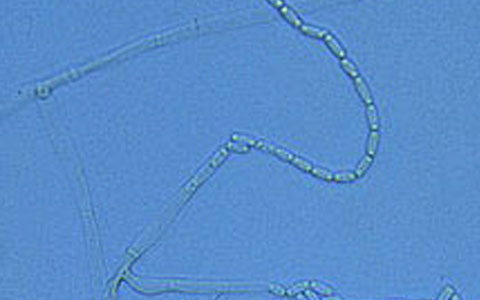
Don’t let oak wilt (Bretziella fagacearum) kill your tree. While few fungi can bring down the mighty oak tree, this is one of them.
Oak wilt is one of the most destructive tree diseases in the United States, and it’s on the loose, killing oak trees at nearly epidemic proportions. If your oak tree(s) appear to be in trouble, its problems may be caused by a fungus that, if not halted, will kill your tree in a matter of months.
72tree.com gathered essential information about oak wilt disease, how to identify it, treat it, and prevent it.
What is Oak Wilt?
Bretziella fagacearum, formerly known as Ceratocytis fagacearum, is the scientific name for oak wilt, and this fungal disease affects all species of the oak (Quercus) genus by disabling the water conducting system in these trees.
Based upon porosity and leaf shape, oaks are divided into two groups; red oaks and white oaks. Bretziella fagacearum affects these two groups differently:
White Oak Group – The species below that are part of this group have rounded leaf edges and pores clogged by tyloses.
• Quercus alba (the most commonly known white oak species)
• Quercus lobata (California white oak or valley oak)
• Quercus polymorpha (Mexican white oak or Monterrey oak)
• Quercus bicolor (swamp white oak)
• Quercus arizonica (Arizona white oak)
• Quercus garryana (Oregon white oak or Garry oak)
Tyloses are outgrowths on cells of xylem vessels. Tyloses fall from the sides of the cells and seal a tree’s vascular tissue to prevent or reduce damage.
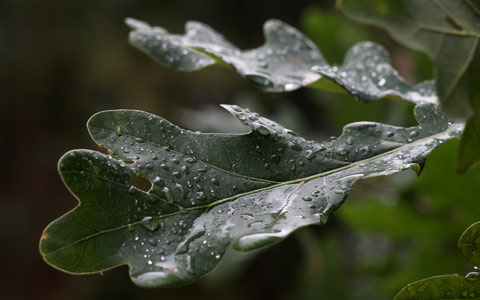
Red Oak Group – The species below that are part of this group have pointed leaf edges and large open pores:
• Quercus falcata (southern red oak)
• Quercus graciliformis (Canby oak or Chisos oak)
• Quercus buckleyi (Texas red oak)
• Quercus rubra (the northern red oak)
• Carnarvonia araliifolia (an Australian rainforest tree)
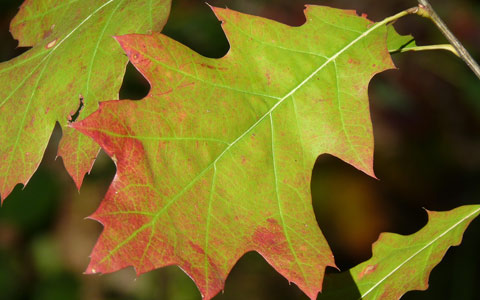
Due to the difference in porosity, species in the red oak group are more easily infected by oak wilt and die more quickly than the white oak group species. In fact, infected trees in the red oak group may die off within a single summer season, where those in the white oak group can persist for several years after being infected.
Another difference is that trees in the red oak group produce fungal spore mats that facilitate the “above ground or overland” spread of the pathogen, whereas the trees in the white oak group rarely produce them.
How to Identify Oak Wilt Disease
Oak trees infected with oak wilt present the following symptoms:
• Leaf chlorosis
• Leaf drop (off-season)
• Dieback from the top down
• Veinal necrosis (Live oak species only)
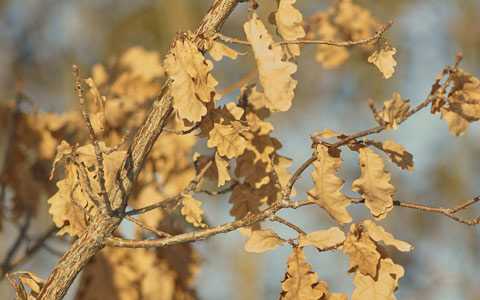
In most cases of infection, oak leaves will turn pale green and then brown while still attached to the tree. By the time they fall, the tree is likely dead.
This disease is dangerous in that it is extremely fast acting; it can kill a mature oak tree in a matter of two to four months while spreading from tree to tree via grafted roots.
Grafted roots occur when the roots of two or more compatible tree species meet and fuse together. Once roots are grafted, they gain the ability to interchange nutrients, water, and disease to each other.
If you suspect that your oak tree is infected with oak wilt, have your tree inspected by an arborist immediately.
How to Treat Oak Wilt Disease
Once Bretziella fagacearum has infected your tree, your fast action is required to halt this pathogen. There are two principle ways to treat oak wilt disease:
Fungicide Treatment – Propiconazole applications are an effective preventative measure. During the earliest stages of infection, this fungicide is injected through holes drilled in the root flare, to the tree’s water-conducting vascular system.
The success of this treatment is greatly influenced by the health of the tree and the fungicide application rate. Any time holes are drilled into a tree for this type of treatment, a professional should be hired to make sure the fungicide is applied correctly and that the holes do not become sources of further infection or infestation.
Trenching to Sever Root Connections – When a tree has been infected and fungicide treatments are no longer viable, trenching will help stop the pathogen from being transmitted from tree to tree by grafted roots.
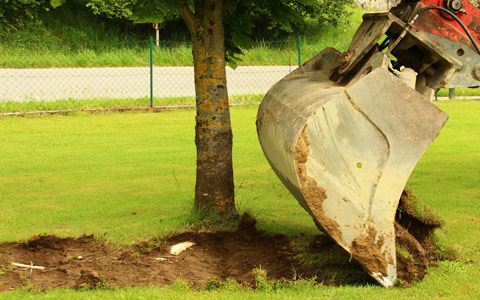
After identifying infected trees, a trench should be dug with a trenching machine, ripper bar, rock saw, or walk-behind trencher to a depth of at least 4 feet (trenches deeper than 4 feet may be required in deeper soil), and a minimum 100 foot radius around the infected tree(s).
Healthy trees within the trench are considered high risk and should be uprooted or removed to improve the effectiveness of the barrier. Tree removal should start immediately after trenching, beginning with the trees closest to the trench, and working inward thereafter until all of the trees within the trench have been eliminated.
An oak wilt contamination can be more easily contained when treatment begins early. Trees outside the trenched area should be monitored for several years after the infected area has been treated, and in the event of further infection, the same procedure (trenching and tree removal) should be repeated while the contaminated area is still manageable.
Oak Wilt Disease Prevention
Tree disease prevention begins with tree health. However, when it comes to oak wilt disease, special care must be taken to avoid infecting otherwise healthy trees. The following will help you avoid spreading the Bretziella fagacearum pathogen to your oaks:
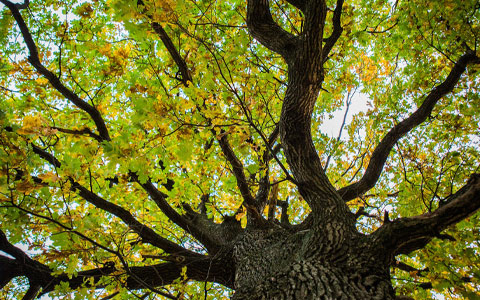
Tree Health – A healthy tree has defense mechanisms that help it stave off attacks from fungi and insect infestation. Whether it be exuding sap to close wounds made by insects, or compartmentalization to contain invading pathogens, the healthier your tree is, the more effective its defense will be. The following steps help you increase your tree’s vitality:
During prolonged dry seasons:
• Provide weekly deep waterings for your trees.
• Fertilize your trees before the growing season begins (February, and early March).
• Mulch your trees to avoid losing soil moisture.
• Inspect your trees frequently for wounds and weather damage (including surface roots), use tree wound dressing, wax based dressing, or latex paint to seal these wounds.
Pruning Activities – Pruning encourages new growth. However, in the case of oak trees, pruning them may provide an opportunity for Bretziella fagacearum to invade and kill your tree. Adhere to the following guidelines when pruning oak trees:
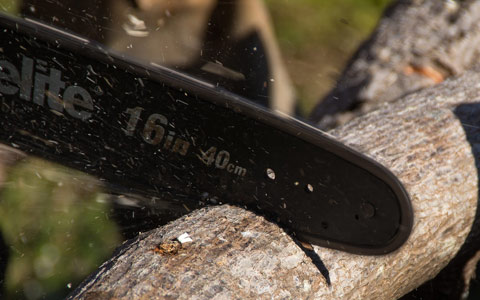
• From February through July, avoid pruning or wounding your oak tree(s). This period is when oak wilt fungal mats are most easily formed, and oak bark beetles (Scolytinae) and sap beetles (nitidulid) are most active.
• Pruning activities should take place during midwinter or extended periods of hot weather in late summer. (these are the periods which present the least threat to your oaks)
• Sterilize all pruning equipment between trees.
• Paint all pruning wounds with a tree wound dressing, wax-based dressing, or latex paint to create an immediate barrier to contaminated beetles or airborne pathogens, regardless of the time of year.
• Freshly cut stumps and wounded surface roots should be dressed immediately, as Bretziella fagacearum can be transmitted from tree to tree through grafted roots.
Diseased Tree Removal – Oak trees that are dead or dying from oak wilt disease should be removed and immediately burned or buried to prevent dissemination of the disease’s spores.
When dealing with infected trees, call on a professional tree service to handle the removal and destruction of these trees. They will also be able to assess the potential risk to surrounding trees and advise you on any further necessary preventative measures.
Firewood Awareness – Avoid purchasing or transporting unseasoned firewood. Since fungal mats may form on unseasoned oak firewood, you could be unintentionally spreading the pathogen to uninfected areas.
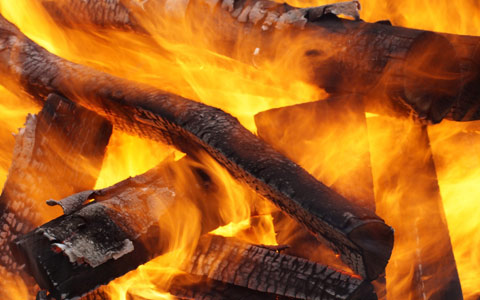
Seasoned firewood has been dried for a minimum of one year and poses little to no threat of spreading the oak wilt pathogen.
Oak Tree Disease – Bretziella Fagacearum
Your mighty oak tree can become infected and die in a matter of months. The Bretziella fagacearum fungus can spread by way of insects, airborne spores, and through grafted roots. By the time you identify the problem, you may be dealing with several infected trees on a fast-track to death.
In this article, you discovered vital information about oak wilt disease, how you can identify it, what you need to do to treat it, and prevention tips.
Your slow response to this fast-acting disease can not only result in the death of your tree, but also to the spread of oak wilt to numerous trees in surrounding environments. At the first sign of trouble, call a professional to help you assess the damage and required measures for containment.
Sources:
https://tfsweb.tamu.edu/OakWiltFAQS/
http://www.inspection.gc.ca/plants/plant-pests-invasive-species/diseases/oak-wilt/fact-sheet/eng/1325629194844/1325632464641
https://www.annualreviews.org/doi/abs/10.1146/annurev.en.07.010162.001551?journalCode=ento
https://www.canr.msu.edu/news/oak_wilt_disease_1
http://www.austintexas.gov/blog/oak-wilt-101
